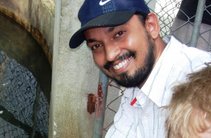Osteoporosis
Most people assume that any bone or joint problem they are
experiencing is due to a lack of calcium and they start popping calcium pills
(myth 1). This obviously is not true. Calcium related disorders like
osteoporosis form a small percentage of bone and joint disorders and it is not
correct to assume that all ailments are related to calcium. The most famous
misconception is that calcium deficiency causes joint pain (myth 2). Arthritis
(joint inflammation and pain) has little to do with calcium.
The most well known calcium related disorder is osteoporosis. Bone is made of calcium
and phosphate. Normal bone undergoes constant renewal in the body. Old bone is
removed and new bone is laid down. If there is calcium deficiency or calcium is
not absorbed from the intestines, the rate of new bone formation becomes less
than that of bone removal. This results in a quantitative reduction in bone
mass. Once the bone mass decreases beyond a critical level, the condition is
termed as osteoporosis.
Bones are like calcium ‘banks’. Deposits of calcium in bone
are made during the first twenty five years of life. Therefore adequate calcium
intake is essential for all growing children. This ensures maximum calcium
deposition and strong bones. I recommend 2 glasses of milk every day for all
growing children unless they have lactose intolerance (recommendation 1). After
twenty five years calcium is slowly lost from the bones over time. Some people
have poor deposits to start with or they lose calcium at a faster rate and
become osteoporotic.
The main cause of osteoporosis is a lack of female hormones
oestrogen and progesterone after menopause. These hormones help keep calcium
within the bones. A woman looses tenfold
more calcium than normal for the first ten years following menopause. Poor dietary intake of calcium contributes to
osteoporosis. Vitamin D helps absorb calcium from the intestines and deposits
it in bones. Dietary deficiency of vitamin D can cause osteoporosis. A thin
frail (poor diet), post menopausal woman with a family history of osteoporosis
is at a high risk for osteoporosis. Men also suffer from osteoporosis but at an
older age.
Osteoporosis is a perilous disease as the weak bones are at
a risk of fracture with no or minimal trauma (easy fracture). The hip and spine
are the most common sites and also the most dangerous.
Contrary to popular belief, osteoporosis is a silent
disease. This means it has no symptoms. Pain due to osteoporosis occurs in only
the advanced stages. Often the first symptom is a fracture, but by then it is
usually too late!
The best way to detect osteoporosis is by doing a DEXA scan
(recommendation 2). This test should ideally be done at menopause and repeated
every 1 or 2 yearly. Based on the results your doctor can give you
recommendations on supplementation and treatment. Needless to say that early
diagnosis and timely treatment will go a long way in avoiding fractures.
Modern tests allow objective assessment of body calcium.
Blindly taking calcium supplements for ‘bone pains’ or as a ‘good habit’ (myth
3) is not recommended or justifiable.
There remains a lot of confusion on dietary recommendations
for calcium and vitamin D. Most authorities recommend at
least 1,200 milligrams per day of calcium and 800 - 1,000 international units per
day of vitamin D. Diets rich in calcium include milk and milk products like
cheese and yoghurt, green leafy vegetables and fish. Diets rich in vitamin D
include liver (cod liver oil), fish, meat, milk and milk products and egg.
Exposure to sunlight also helps your skin to manufacture vitamin D. Early
morning or evening sunlight is preferred. I recommend allowing children some
play time in sunlight (recommendation 3).
Certain exercises can
reduce the risk of fracture in patients with osteoporosis (recommendation 4). Weight
bearing exercises like walking or jogging and resistance exercises like free
weights or stretch bands are recommended.
Even after extensive awareness campaigns, osteoporosis still
remains a very misunderstood disorder which causes a lot of anxiety and
confusion.



